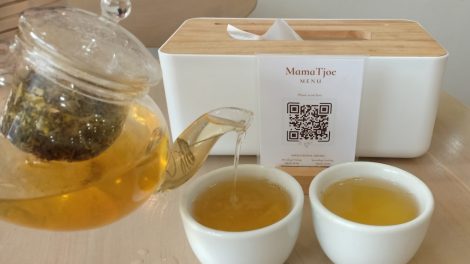As I delve into the rich tapestry of Taoism, I find myself captivated by its profound simplicity and depth. Originating in ancient China, this philosophy is often attributed to the sage Laozi, whose seminal text, the “Tao Te Ching,” serves as a cornerstone for understanding the Taoist worldview. At its core, Taoism emphasizes living in harmony with the Tao, or the “Way,” which represents the fundamental nature of the universe.
This concept is not merely an abstract idea; it is a guiding principle that encourages me to align my life with the natural rhythms and flows of existence. Taoism invites me to explore the interconnectedness of all things. It teaches that everything in the universe is part of a greater whole, and that by recognizing this unity, I can cultivate a sense of peace and belonging.
The philosophy encourages me to observe rather than control, to embrace spontaneity rather than rigidity. In a world often dominated by chaos and competition, I find solace in the Taoist perspective that life is not a battle to be won but a journey to be experienced. This understanding lays the foundation for many of the practices and principles that I will explore further in my journey through Taoism.
Key Takeaways
- Taoism is a philosophical and spiritual tradition that emphasizes living in harmony with the Tao, or the natural order of the universe.
- Patience is highly valued in Taoism, as it allows individuals to align themselves with the natural flow of life and avoid unnecessary struggle.
- Wu-wei, or effortless action, is a key concept in Taoism that encourages individuals to act in a way that is spontaneous and in harmony with the natural flow of events.
- Cultivating inner calm through practices such as meditation and mindfulness is essential in Taoism for achieving a state of balance and harmony.
- Embracing the flow of life and letting go of control is a central principle in Taoism, as it encourages individuals to surrender to the natural rhythm of the universe.
The Importance of Patience in Taoism
Patience emerges as a central theme in my exploration of Taoism. In a society that often glorifies speed and instant gratification, I find it refreshing to embrace the idea that true growth and understanding take time. The Taoist philosophy teaches me that patience is not merely waiting; it is an active engagement with the present moment.
It encourages me to cultivate a sense of trust in the natural unfolding of life, allowing events to transpire at their own pace rather than forcing outcomes. As I practice patience, I begin to notice how it transforms my interactions with others and my approach to challenges. Instead of reacting impulsively, I learn to pause and reflect, creating space for clarity and insight.
This shift in perspective allows me to appreciate the beauty of gradual progress and the lessons that come from enduring difficulties. In essence, patience becomes a form of wisdom, guiding me to navigate life’s complexities with grace and resilience.
Practicing Wu-wei: The Art of Effortless Action

Wu-wei, often translated as “non-action” or “effortless action,” is a concept that resonates deeply with me as I immerse myself in Taoist philosophy. It does not imply passivity or laziness; rather, it encourages me to align my actions with the natural flow of life. By practicing wu-wei, I learn to let go of excessive striving and control, allowing my intentions to manifest organically.
This approach fosters a sense of ease and fluidity in my daily experiences. In my pursuit of wu-wei, I find that it requires a delicate balance between intention and surrender. I am reminded that while I can set goals and aspirations, the path to achieving them may not always be linear.
Embracing this uncertainty allows me to remain open to unexpected opportunities and insights. As I cultivate this mindset, I discover that my actions become more effective when they arise from a place of authenticity rather than force. Wu-wei teaches me that sometimes the most profound impact comes from simply being present and responsive to the moment.
Cultivating Inner Calm: Techniques and Practices
In my journey through Taoism, cultivating inner calm becomes an essential practice. The fast-paced nature of modern life often leaves me feeling overwhelmed and disconnected from my inner self. To counter this, I explore various techniques that promote tranquility and mindfulness.
One such practice is deep breathing, which serves as a powerful tool for grounding myself in the present moment. By focusing on my breath, I create a sanctuary within where I can retreat from external distractions. Another technique I embrace is mindfulness meditation.
This practice encourages me to observe my thoughts and emotions without judgment, fostering a sense of acceptance and clarity. As I sit in stillness, I learn to witness the ebb and flow of my mind, recognizing that thoughts are transient and do not define my essence. Through regular meditation, I cultivate a deeper connection with my inner self, allowing me to navigate life’s challenges with greater equanimity.
Embracing the Flow of Life: Letting Go of Control
One of the most liberating aspects of Taoism is the invitation to embrace the flow of life by letting go of control. In my quest for certainty and security, I often find myself clinging tightly to plans and expectations. However, Taoist philosophy teaches me that resistance only leads to frustration and suffering.
By surrendering my need for control, I open myself up to the beauty of spontaneity and serendipity. As I practice letting go, I begin to notice how life unfolds in unexpected ways. Opportunities arise when I least expect them, and solutions present themselves when I release my grip on outcomes.
This shift in perspective allows me to approach challenges with curiosity rather than fear. Embracing the flow of life becomes an act of trust—trusting in myself, in others, and in the universe as a whole. It is a reminder that while I may not have control over every circumstance, I do have control over my response.
The Role of Meditation in Taoism

Meditation holds a significant place within Taoist practice, serving as a gateway to deeper self-awareness and connection with the Tao. As I engage in meditation, I find that it offers me a refuge from the noise of daily life—a space where I can turn inward and explore the depths of my being. Through various forms of meditation, such as sitting quietly or engaging in moving meditations like Tai Chi, I cultivate a sense of harmony between body and mind.
In meditation, I learn to quiet the incessant chatter of my thoughts and tune into the subtle rhythms of existence. This practice fosters a heightened awareness of my surroundings and an appreciation for the present moment. As I immerse myself in meditation, I discover that it is not about achieving a particular state but rather about embracing whatever arises with openness and acceptance.
This journey inward becomes a source of inspiration and clarity that informs my actions in the world.
Applying Taoist Principles to Everyday Life
As I integrate Taoist principles into my everyday life, I find that they offer practical guidance for navigating challenges and fostering well-being. One key aspect is the emphasis on simplicity—both in thought and action. By decluttering my mind and surroundings, I create space for what truly matters.
This simplicity allows me to focus on meaningful relationships and experiences rather than getting lost in material pursuits. Moreover, Taoism encourages me to cultivate gratitude for each moment, recognizing that every experience contributes to my growth. Whether it’s savoring a meal or appreciating nature’s beauty, these small acts of mindfulness enrich my life immeasurably.
By applying these principles consistently, I create a more harmonious existence that aligns with the natural flow of life.
Finding Balance: Nurturing Patience in a Fast-Paced World
In our fast-paced world, nurturing patience becomes an act of rebellion against societal norms that prioritize speed and efficiency. As I strive to embody patience in my daily life, I recognize that it requires conscious effort and commitment. One way I cultivate this quality is by setting aside time for reflection—whether through journaling or simply sitting quietly with my thoughts.
This practice allows me to slow down and reconnect with my inner self amidst external distractions. Additionally, I seek out moments of stillness throughout my day—whether it’s taking a leisurely walk or enjoying a cup of tea without distractions. These intentional pauses serve as reminders to breathe deeply and appreciate the present moment.
By embracing patience as a guiding principle, I find that I am better equipped to navigate life’s challenges with grace and resilience. In conclusion, my exploration of Taoism has illuminated pathways toward greater understanding, patience, and inner calm. By embracing its principles—such as wu-wei, meditation, and letting go—I cultivate a deeper connection with myself and the world around me.
In a fast-paced society that often prioritizes haste over reflection, nurturing patience becomes an essential practice for finding balance and harmony in everyday life. Through this journey, I am reminded that true wisdom lies not in rushing toward outcomes but in savoring each moment along the way.









Add Comment